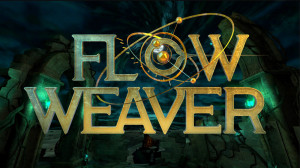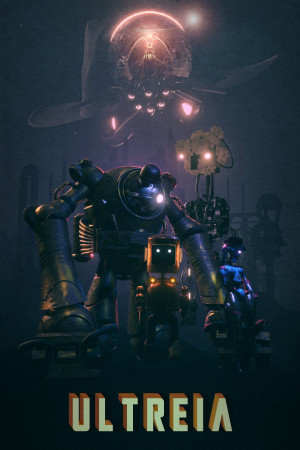Review for Root Film

Kadokawa Games’ 2016 visual novel adventure Root Letter was a mixed bag with some good conceptual ideas tripped up in the execution, neglecting to provide an engaging enough narrative and making its Phoenix Wright-style mystery solving very rudimentary. The developer’s follow-up effort, Root Film, manages to address the first of its predecessor’s shortcomings, crafting an entertaining story around memorable characters this time, even if the investigation aspects continue to be a bit on the underwhelming side.
It's important to note that Root Film is more of a spiritual successor to Root Letter than a direct sequel. There’s no link between the people or plotlines of the two titles, though things like art style and general flow of gameplay remain largely unchanged. Like the previous adventure, this one is set in and around Japan’s beautiful Shimane Prefecture, but the similarities between the two games largely start and stop there. This one features an all-new cast of characters solving a series of seven (mostly) self-contained murder mysteries, with the overarching narrative’s connective tissue not coming to fruition until the last few chapters.
The cast is split into two separate teams of investigators, each acting independently of the other and each with its own central protagonist. During the introductory case, players will meet Rintaro “Max” Yagumo, budding film director and head of his own tiny film production company, which specializes in producing schlocky ghost adventure DVDs. Along with his hilariously sassy assistant and editor Aine Magari, and later the up-and-coming actress Hitoha Amakata, Yagumo’s team travels all around Shimane Prefecture to scout locations, getting themselves entangled in mysteries wherever they go.
Things kick off as Yagumo is offered the chance to direct an episode of an upcoming TV revival. The Shimane Mystery Drama Project promises to be a career-making opportunity, but to officially land the gig Rintaro must first investigate the curse rumored to be behind the initial iteration of the program shelved ten years earlier. Once this opening chapter is cleared, players can choose whether to continue on to Yagumo’s next challenge or start the (much shorter) narrative of the game’s second team of investigators; clearing a case in either will unlock the next mystery in its respective branch.
While players will spend the lion’s share of their time with Yagumo and his crew, the game’s alternate lead duo is featured in two chapters of its own: Riho is a popular new actress already in the process of establishing a name for herself, and Shouko Manabe is her manager and friend. Like Yagumo, the two find themselves drawn into murder mysteries as a matter of course, simply by being in the right place at the right time. The two sets of protagonists appear to exist independently of each other for the majority of the narrative, but the way all storylines are eventually tied together is one of the game’s most impactful moments, offering the kind of twist that leaves you reflecting on it long after the fact.
The gameplay is exactly the same for both groups, similar to what it was in Root Letter and visual novels in general. Just like in actual TV murder mystery serials, each chapter begins with its designated team going about its business, taking a few minutes to introduce a new location or characters that will soon become important. Eventually tragedy strikes and a body is discovered, at which point the investigation kicks in. The more episodic approach and having two independent groups of protagonists help with pacing by constantly introducing fresh faces and situations, but connecting the final few chapters was also a wise choice, offering a thrilling climax once the player has grown fond of and really gotten to know all characters involved.
While the cases themselves are entertaining to guess along with, the gameplay just doesn’t offer enough to satisfy a sleuthlike sense of accomplishment. Player interaction is kept fairly minimal, with choices generally boiling down to selecting locations to visit from a map screen, then cycling through all interactive hotspots highlighted on the screen to drive the investigation forward. It’s rather passive and unexciting, but at least it avoids some common adventure game pitfalls like pixel hunting. Though progression is very simple, it can also be needlessly rigid. There are no posted objectives, and moving on may require a specific item in one particular location to be interacted with multiple times. Some hotspots disappear after being exhausted, but most remain onscreen, forcing too many “click on everything multiple times” exercises. Even fully explored map locations usually remain accessible, leading to some potentially cumbersome backtracking to find that one hotspot that hasn’t yet been exhausted. It’s not a critical and ever-present issue, but one that could have been easily avoided.
When it comes to gathering evidence to make your case, Root Film takes a more novel approach. The game eschews collecting tangible items in an inventory system; instead it has bestowed a unique quirk upon both of its protagonists. Yagumo and Riho have the power of synesthesia, an ability that lets them memorize key phrases from others’ statements, which then act as evidence that can be presented when pressing suspects during that chapter’s interrogation sequence. However, this task offers no room for experimentation, testing neither deductive skill nor dexterity. The synesthesia mode triggers automatically when certain key phrases come up in the course of dialogue, halting the world around you until you simply press a button to memorize it. It’s a neat idea on paper, but feels wholly unnecessary as a gameplay mechanic.
With no further input from you, eventually each case reaches its final showdown: a face-off between either Yagumo or Riho on one side and the accused evildoer on the other. Exposing the suspect’s lies is done via a simple version of the kind of interrogation mini-game seen in the Phoenix Wright or Danganronpa series. The two opponents trade verbal jabs with one another until you’re presented with a particular statement that must be refuted by selecting the correct synesthesia phrase from a short list of available options. Choosing correctly will deal “damage” to your adversary, represented via a meter above their portrait, while an incorrect response will damage the player character instead. The showdown ends after one meter or the other is completely full. However, while it’s possible to fail this mini-game (requiring it to be restarted) you would actually have to try hard to lose. Not only are the right responses usually quite obvious, but the game often presents as few as three or four choices to pick from, with most foes only lasting a similar number of hits before falling.
Fortunately the individual murder mysteries are only one aspect of Root Film’s charm. As with most visual novels, the game features primarily static scenes, with the camera sometimes panning and zooming around the scene to indicate action or movement from one of the cutout anime-style character overlays. However, the art itself is warm and inviting throughout, with colors that simply leap off the screen in a lush and vibrant hand-drawn art style. The music is pleasant as well, with upbeat instrumentals managing to accompany much of the substantial twenty-to-thirty-hour campaign, somehow avoiding growing tiresome despite heavy repetition. Meanwhile, moody, disquieting pieces in a somewhat Hitchcockian style serve to underscore the game’s grimmer moments.
No matter how implausible or supernatural they may at first appear, the cases are entirely grounded in reality (with the exception of a few cheeky optional encounters thrown in as quasi Easter eggs) and feature pretty backdrops of Shimane Prefecture’s nature reserves, alleys, real-life sites like Matsue Castle and even a few historic or mythological landmarks, like the “path to the underworld” or the “Letter to Heaven” mailbox. Though investigating is serious business, the crew may take a moment to head to a beach for a bikini-clad photo op or stop to chow down at a roadside rest stop. Then, when needed, an unsettling close-up of a dead body brings the serious nature of the murder investigations back to the forefront.
Raising the bar even higher are Root Film’s eclectic characters. Every cast member is unique and memorable, which, when coupled with the Japanese actors’ vocal performances, lends each a nicely fleshed-out personality. The dialogue provides many moments of levity, with a solid and enjoyable translation provided via subtitles. The interplay between Yagumo and his cheeky assistant Magaru comes to mind, as he may be the boss but she has zero intention of letting him get away with fawning over the pretty new actress under his charge, and she frequently takes advantage of his status as company head by making him pay through the nose for all manner of expenses. No mere sidekick, Magaru (like the others) also brings necessary skills to the table, as no one is as adept with manipulating the team’s technology and editing software while hunting for clues as she is (though this, too, is entirely scripted and out of the player’s control). There’s also the detective duo of Misawa and Keishino of the Shimane Prefectural Police, whom Yagumo’s crew frequently runs afoul of. The classic trope of the grizzled veteran cop put into awkward situations by his starstruck rookie partner is good for several chuckles, at least.
Despite being visually and conceptually so alike, Root Film is a considerable improvement over its predecessor in several key ways, and you can safely play this game without any familiarity with the earlier series debut. It manages to strike many of the right chords, thanks largely to its memorable and endearing cast, brought to life through a vibrant art style, expressive writing and delightful voice acting in its native Japanese. The narrative, too, pulls its own weight better this time, and while the cases practically resolve themselves without much player involvement and tend to be quite easy when input is required, the intriguing murder cases and a memorable late-game reveal ensure that you won’t soon forget your time in Shimane Prefecture.















__medium.jpg)






__small.jpg)






